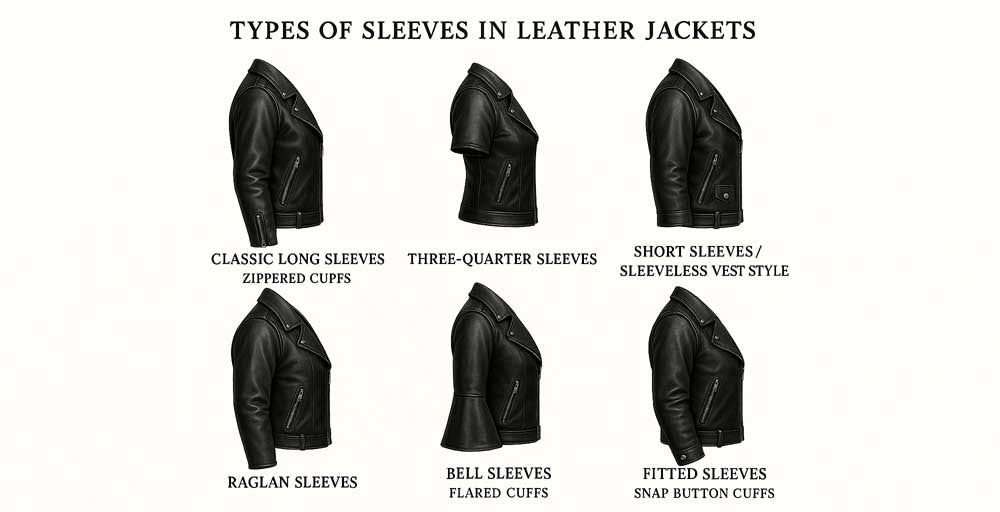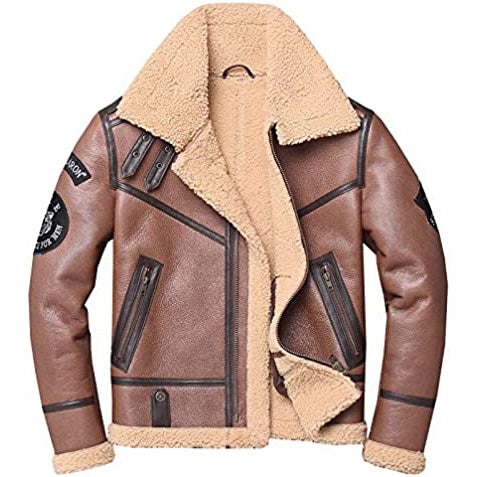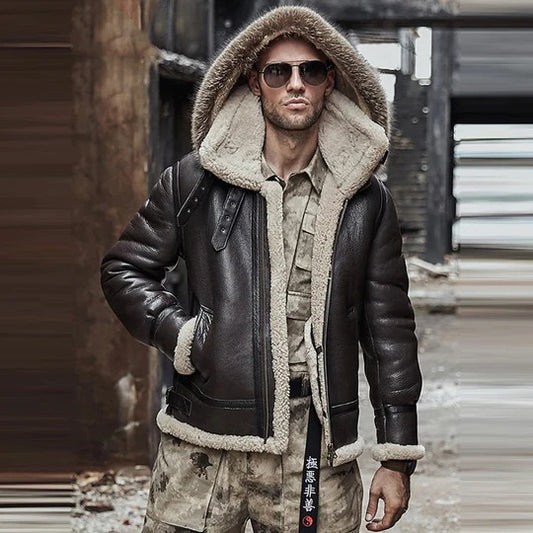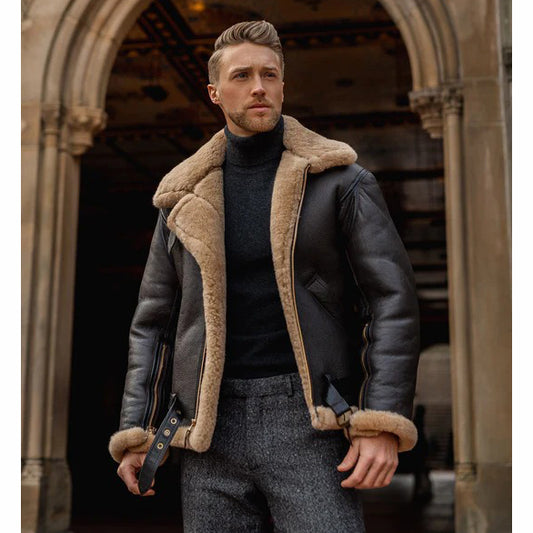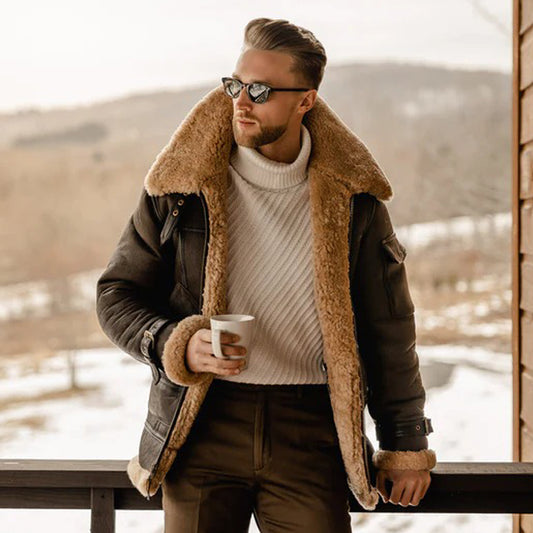Key Takeaways
-
Sleeve design heavily affects comfort, movement, and silhouette.
-
Set-in sleeves offer structure; raglan gives flexibility; fashion sleeves bring flair.
-
Seam layout, tapering, gussets, and cuff style influence usability.
-
Tailoring or selecting the right sleeve style ensures longevity and fit.
-
Offer options or customization to match customer needs.
Introduction: Why sleeve style matters in a leather jacket
You might already focus on leather quality, cut or color when choosing a jacket. But the type of sleeve can make or break how comfortable it feels, how it moves with you, and how stylish it looks. Imagine stiff joints or a sleeve seam that rubs—these annoyances often come from a poor sleeve design. In this post, you’ll learn key types of sleeves in a leather jacket, understand their trade-offs, and see which leather jacket sleeve styles match your body, activity, and taste. Whether you ride a motorcycle or wear your jacket daily, sleeve design is central to fit, motion, and durability. Let’s break it down.
Anatomy of a jacket sleeve (cap, seam, cuff)
Before diving into styles, it helps to understand the parts of a sleeve. The sleeve cap (or head) is the curved upper portion that meets the shoulder seam. The sleeve seam runs along the inner and outer arms, joining the front and back panels. The cuff is the hem at the wrist, often finished with zippers, snaps, ribbing, or plain folded leather. How the cap is shaped, where seams sit, and how the cuff finishes all influence comfort, fit, and aesthetics. A well-designed cap and seam layout allows ease of movement. In leather jackets, seams may be reinforced, and cuffs might include stretch fabric or zip extensions to blend function and style.
Set-in sleeve (classic style)
The set-in sleeve is the most conventional sleeve type. It’s sewn into a defined armhole, with the seam following the natural shoulder line. Because it's so common, it gives a clean, structured silhouette that complements tailored leather jackets. Many leather jacket sleeve designs adopt this style because the seam is predictable and helps control shape. Its downside: limited freedom of movement near the underarm, especially when pulling arms forward or layering thick clothing. But for everyday wear, riding or style jackets that emphasize structure, set-in sleeves balance aesthetics and functionality.
Raglan sleeve (for movement)
In a raglan sleeve, the seam extends from the neck or collar down to the underarm, not just from the shoulder. This continuous seam allows broader motion, especially in the shoulders, and has a sportier feel. Raglan sleeves reduce bulk at the shoulder joint and enhance flexibility, making them a popular leather jacket sleeve style for active wear or moto jackets. They also visually soften the shape of the shoulder. If you plan to layer hoodies beneath your jacket or use it for riding, raglan sleeves can provide extra room without sacrificing style.
Dolman / batwing sleeve (wide cut)
Dolman or batwing sleeves are cut wide at the armhole and taper toward the wrist. In leather, they create a relaxed, draped silhouette. This style gives a dramatic, fashion-forward look, especially in women’s leather jackets or avant-garde designs. The wide upper sleeve offers movement but can feel bulky under heavier layering. Because seams are minimal, this sleeve type allows curved lines. For a biker or streetwear aesthetic, a subtle batwing variant adds visual interest without overly compromising structure.
Bell sleeve / flared sleeve in leather
Bell sleeves or flared sleeves widen out at the lower arm or wrist, creating a graceful silhouette. In leather fashion, they’re less common but striking when executed well. The flare may start just below the elbow or gradually from mid-arm. Designers sometimes soften the flare with panels, pleats, or curved seam lines. Bell sleeves emphasize style over rugged utility, so they work best in fashion jackets rather than heavy-duty moto pieces. If you want something that transitions from daywear to statement piece, consider a subtle flare rather than an extreme one.
Balloon / bishop / puff sleeve variants
These styles involve volume and shaping:
-
Balloon sleeves puff at the upper arm then taper sharply
-
Bishop sleeves are fuller toward the elbow and cuffed at the wrist
-
Puff sleeves create volume near the shoulder
In leather, achieving these shapes requires precise patterning and often darts, pleats, or gussets. The bulk needs management—too much and the jacket will look overstuffed. But when done well, these sleeves bring a fashion twist. For example, a leather jacket with a slight balloon shape adds flair without overwhelming shape, ideal for women’s styles or limited-edition fashion pieces.
Kimono / wrap sleeve in leather designs
A kimono sleeve is cut as part of the body—no separate armhole seam. This gives ease and a fluid silhouette. In leather jackets, this is rare but can appear in minimalist or avant-garde pieces. The continuity from body to arm offers little restriction across the shoulder. Similarly, a wrap sleeve overlaps over the shoulder seam for a draped effect. These styles prioritize form and artistic shape more than structured fit. If your aim is a unique, fashion-forward jacket in Jackets Kingdom’s collection, these sleeve types are creative differentiators.
Short sleeves / three-quarter sleeves in leather
Most leather jackets lean toward full sleeves, but some designs use short sleeves or three-quarter-length sleeves for warmer weather or unique style. These sleeves typically end above or just below the elbow, allowing more arm exposure. They can be practical for spring leather outerwear or fashion layering. Because leather has less stretch, fit must be precise. Designers often add vents or slits at the cuff to ease movement. These sleeve types trade shielding for breathability and bold style.
Cuff and vent designs (zipper, ribbing, snapped)
The cuff finish can transform a sleeve’s vibe. Common cuff and vent designs in leather jackets include:
-
Zippered cuffs: allow wideness when open, snug fit when closed
-
Snap or button cuffs: more traditional, adjustable tension
-
Ribbed knit cuffs (in hybrid jackets): used for flexibility and comfort
-
Plain folded hems: simple aesthetic
Vent designs let you open a small slit on the outer sleeve seam for comfort or styling. These details define the final look and usability of jacket sleeve types, especially when layering gloves or rolling cuffs. A sturdy cuff detail can prevent stretch over time, preserving shape.
Sleeve tapering, elbow shaping, gussets
Beyond basic type, sleeve shaping matters. Tapering gradually reduces sleeve width from armhole to cuff, giving a streamlined silhouette. Elbow shaping adds curvature or darts so the sleeve bends naturally when your arm is bent. Gussets (triangular or diamond inserts) under the arm increase flexibility and reduce seam stress. In leather jacket construction, these small pattern adjustments make a big difference in comfort. A sleeve that fights when reaching forward or resists movement in layering reveals poor shaping. Good tailoring ensures the jacket feels like a second skin.
Practical concerns: mobility, layering, durability
When selecting a sleeve style, don’t just look at how it looks—consider mobility, how it layers, and its durability. Leather is stiff at first, so designs need allowance for flexing. If you ride a motorcycle or drive, prioritize sleeves that don’t restrict bending your elbow. Layering sweaters or hoodies demands more room at the underarm and cuff. Durability requires strong seam reinforcement, especially at stress points like elbow crease and cuff. A stylistic sleeve with many panels might look elegant, but if seams are weak, it could fail faster. Always weigh aesthetics against wearability.
Altering and customizing sleeve styles (expert tip)
Customization is your ally when off-the-rack sleeves don’t quite work. Tailors frequently adjust sleeve length, taper, or cuff design while preserving original style lines. For leather, one must preserve seam allowances and design integrity. Shortening sleeves often means removing from the cuff rather than cutting high up, so any zipper or snap detail stays consistent. Sleeve width can be adjusted by letting out seam allowances or inserting gussets. Many leather alteration specialists work to retain original design while improving fit. If you buy from Jackets Kingdom, offering sleeve customization as an option can elevate customer satisfaction and reduce returns.
Expert opinion: what sleeve style suits body types & use
From a tailoring and fashion perspective, here’s a guideline:
-
Broad shoulders / athletic builds: go for raglan sleeves to soften the line, avoid wide dolman or batwing styles which may exaggerate bulk.
-
Slim builds: set-in sleeves with slight tapering retain neat lines.
-
Casual, layered or sporty use: raglan or sleeves with gussets give more movement.
-
Statement fashion jackets: incorporate bell, balloon, or kimono sleeves sparingly to preserve balance.
-
Riding or moto use: prioritize sleeves with elbow shaping, gussets, taper to cuff, and zipper or snap cuffs.
-
Custom orders: offer clients a sleeve style choice based on intended use (daily wear, fashion, riding). By integrating expert tailoring insight, Jackets Kingdom can help customers pick the best leather jacket sleeve style for their lifestyle.
Conclusion
Choosing the right types of sleeves in a leather jacket is about balancing style, comfort, and function. Whether you go classic set-in, flexible raglan, or bold flare designs, the sleeve defines how your jacket moves and fits. At Jackets Kingdom, we understand sleeve design is as critical as the leather itself. Explore our custom options, or get in touch to tailor your sleeve style to your body and purpose. Your ideal leather jacket awaits.
FAQs
Q1: What is the most common sleeve style for leather jackets?
The set-in sleeve is the most common — sewn into a defined armhole and giving a clean, structured shape.
Q2: Are raglan sleeves better for movement?
Yes, raglan sleeves extend from the collar to underarm and provide more freedom across the shoulder — ideal for layering or active use.
Q3: Can leather jackets have bell or flared sleeves?
They can, but only in fashion or statement designs. Execution must control bulk, or else movement and comfort will suffer.
Q4: How much can a tailor alter sleeve width?
Up to seam allowance or by adding gussets. But large changes may require redesigns or new panels.
Q5: Do special sleeves (balloon, kimono) reduce durability?
Only if seam stress is ignored. Well-constructed seams and reinforcement are essential to maintain strength in artful designs.

